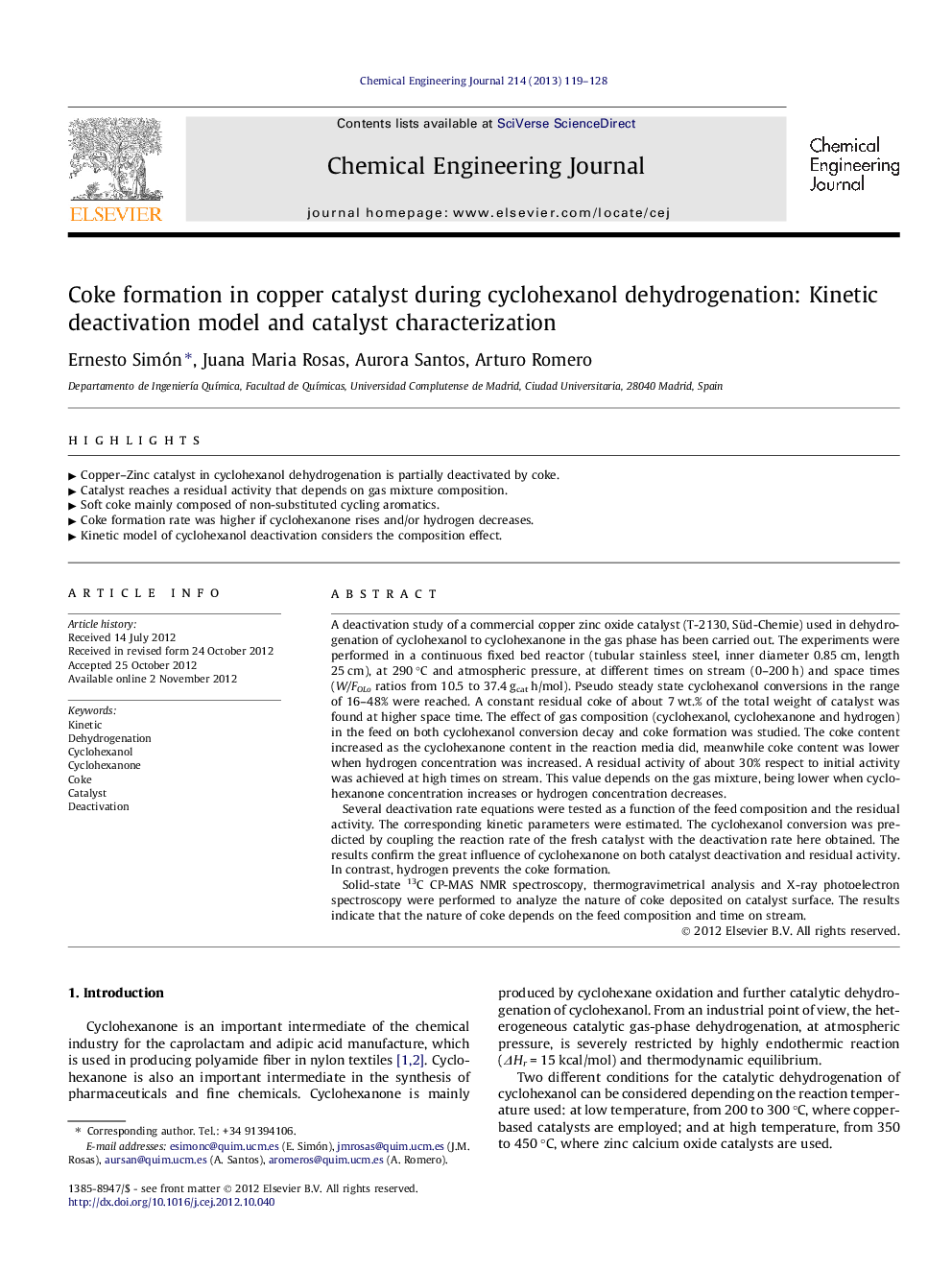| Article ID | Journal | Published Year | Pages | File Type |
|---|---|---|---|---|
| 149062 | Chemical Engineering Journal | 2013 | 10 Pages |
A deactivation study of a commercial copper zinc oxide catalyst (T-2130, Süd-Chemie) used in dehydrogenation of cyclohexanol to cyclohexanone in the gas phase has been carried out. The experiments were performed in a continuous fixed bed reactor (tubular stainless steel, inner diameter 0.85 cm, length 25 cm), at 290 °C and atmospheric pressure, at different times on stream (0–200 h) and space times (W/FOLo ratios from 10.5 to 37.4 gcat h/mol). Pseudo steady state cyclohexanol conversions in the range of 16–48% were reached. A constant residual coke of about 7 wt.% of the total weight of catalyst was found at higher space time. The effect of gas composition (cyclohexanol, cyclohexanone and hydrogen) in the feed on both cyclohexanol conversion decay and coke formation was studied. The coke content increased as the cyclohexanone content in the reaction media did, meanwhile coke content was lower when hydrogen concentration was increased. A residual activity of about 30% respect to initial activity was achieved at high times on stream. This value depends on the gas mixture, being lower when cyclohexanone concentration increases or hydrogen concentration decreases.Several deactivation rate equations were tested as a function of the feed composition and the residual activity. The corresponding kinetic parameters were estimated. The cyclohexanol conversion was predicted by coupling the reaction rate of the fresh catalyst with the deactivation rate here obtained. The results confirm the great influence of cyclohexanone on both catalyst deactivation and residual activity. In contrast, hydrogen prevents the coke formation.Solid-state 13C CP-MAS NMR spectroscopy, thermogravimetrical analysis and X-ray photoelectron spectroscopy were performed to analyze the nature of coke deposited on catalyst surface. The results indicate that the nature of coke depends on the feed composition and time on stream.
► Copper–Zinc catalyst in cyclohexanol dehydrogenation is partially deactivated by coke. ► Catalyst reaches a residual activity that depends on gas mixture composition. ► Soft coke mainly composed of non-substituted cycling aromatics. ► Coke formation rate was higher if cyclohexanone rises and/or hydrogen decreases. ► Kinetic model of cyclohexanol deactivation considers the composition effect.
